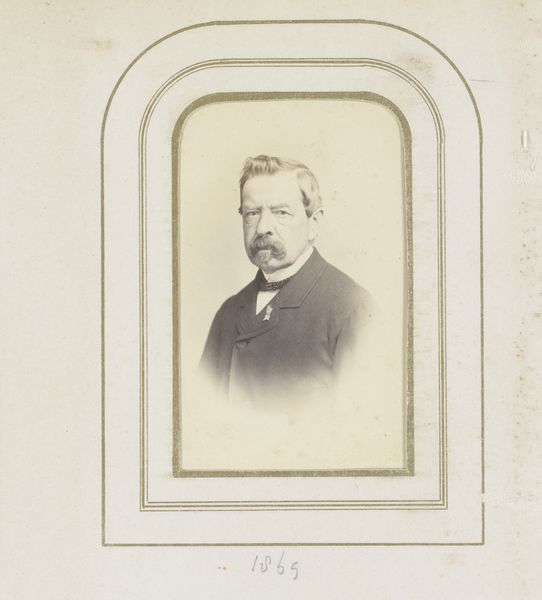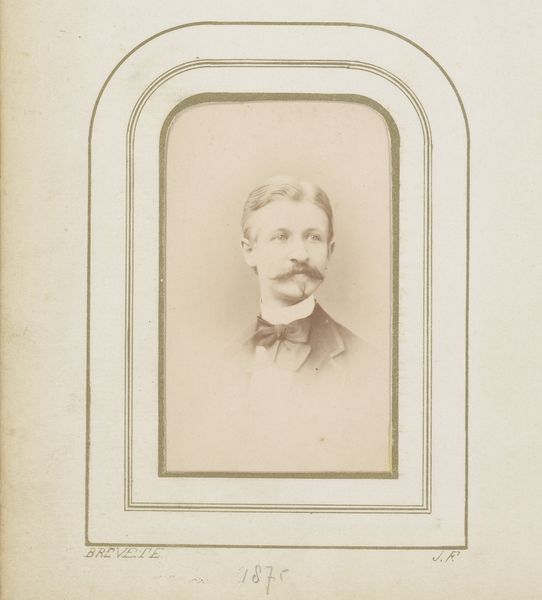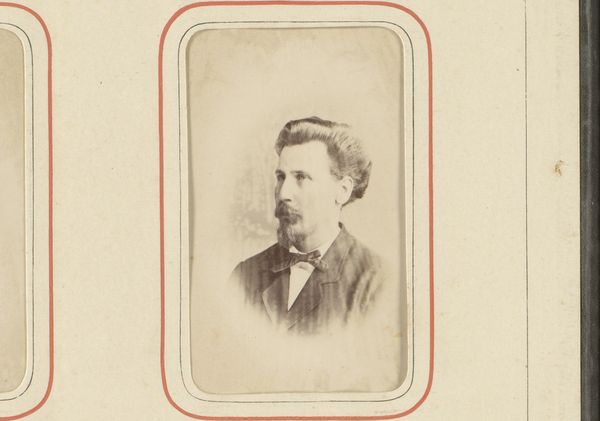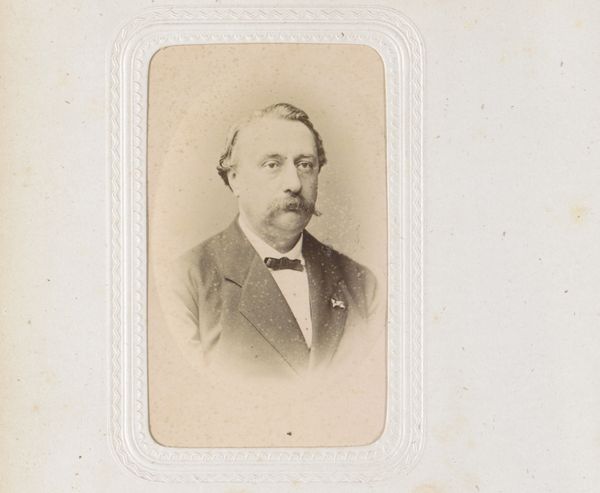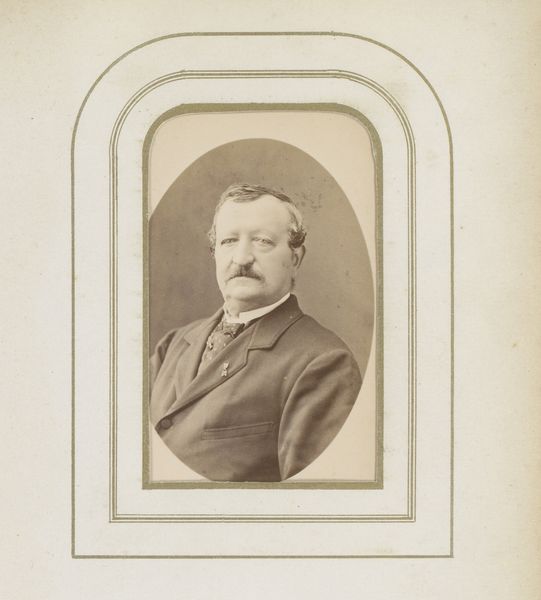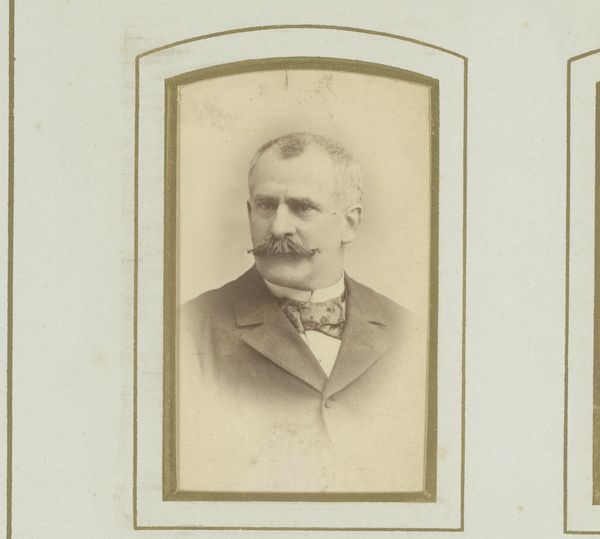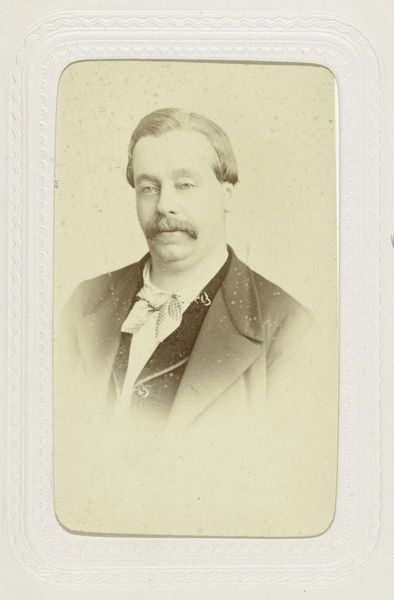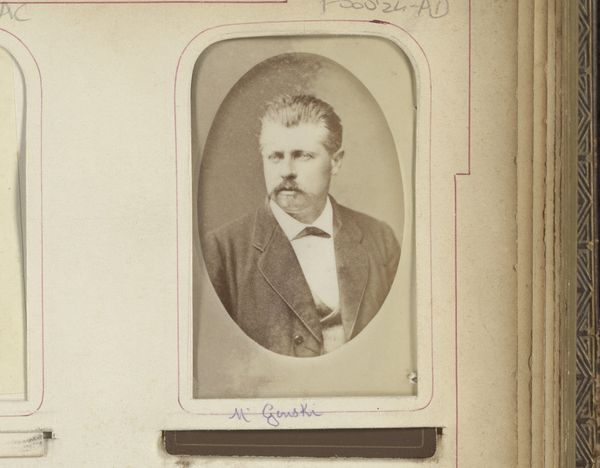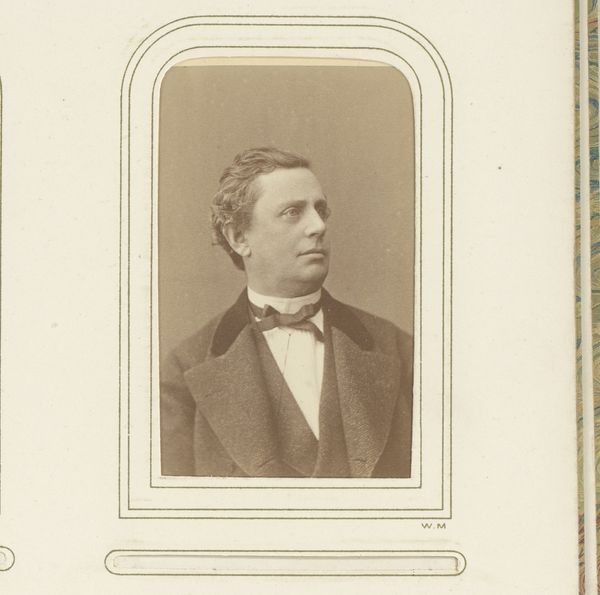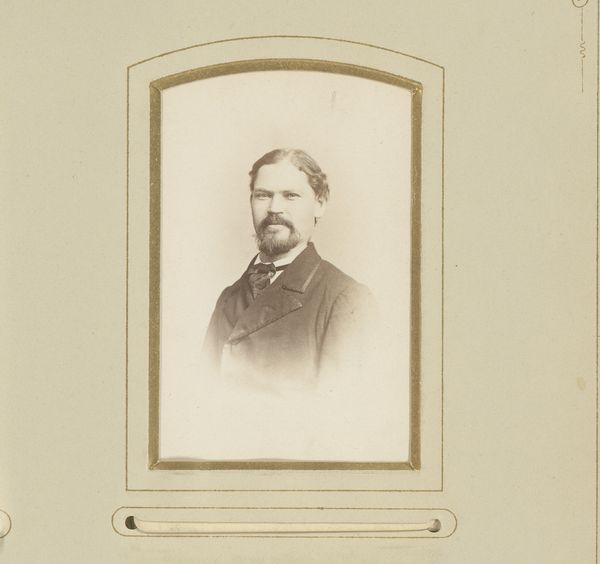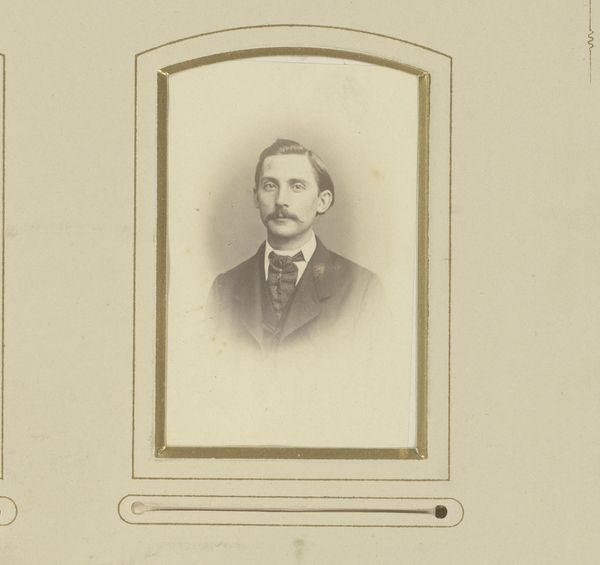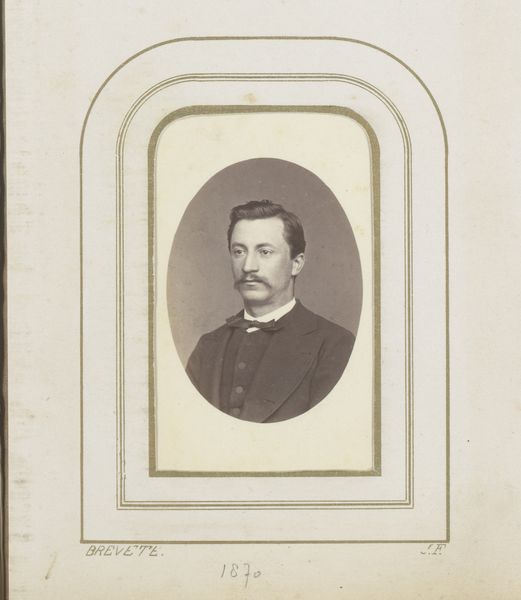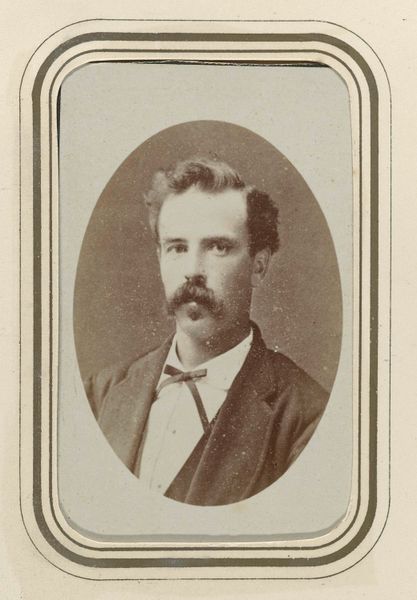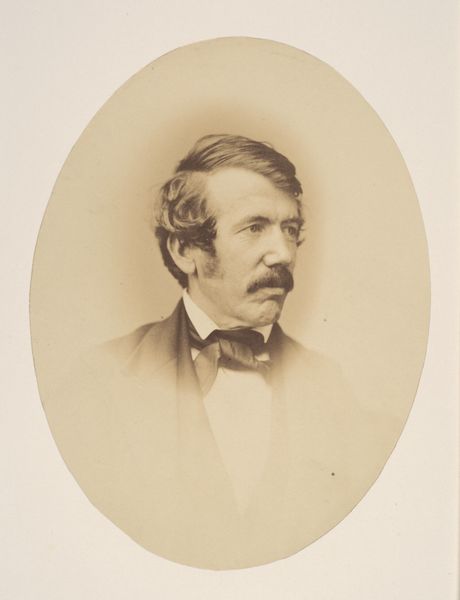
Dimensions: height 83 mm, width 52 mm
Copyright: Rijks Museum: Open Domain
Editor: Here we have "Portrait of Abraham Willet," a gelatin-silver print, created sometime between 1865 and 1880 by Theodor Brüggemann. It has a strangely haunting presence despite its small scale. What aspects of this portrait grab your attention? Curator: As a materialist, I'm fascinated by the context surrounding the production of this gelatin-silver print. Think about it: photography in this period was rapidly evolving, democratizing portraiture but also becoming a powerful tool for documentation and social control. The use of gelatin-silver, a relatively new process, tells us about technological advancements in image-making, impacting art and visual culture at large. Editor: That's interesting. I never considered the technology itself as being significant. How would the advancements change the field of art in particular? Curator: Well, the relative affordability and reproducibility of photographs threatened traditional forms of portraiture. Suddenly, painted portraits were no longer the sole domain of the wealthy. This shift spurred debates about photography's status as "art" versus a mere mechanical reproduction and prompted artists to experiment with new materials, processes, and conceptual frameworks. What implications did it have on class structures? Did photography alter them? Editor: I guess photography became available to more people outside of the elites. But it may also have just been absorbed into the power structures. Curator: Precisely. Now, consider how someone like Abraham Willet—likely a member of the burgeoning middle class given the period—engaged with this technology to construct and disseminate his image. We have to examine this artwork as a material object embedded within specific economic and social relationships, from the photographer's studio to the viewer's gaze. It encourages a deeper understanding. Editor: It makes me appreciate how technological and cultural changes shaped this artwork. It's more than just a portrait; it’s a material document reflecting a society in transition.
Comments
No comments
Be the first to comment and join the conversation on the ultimate creative platform.
